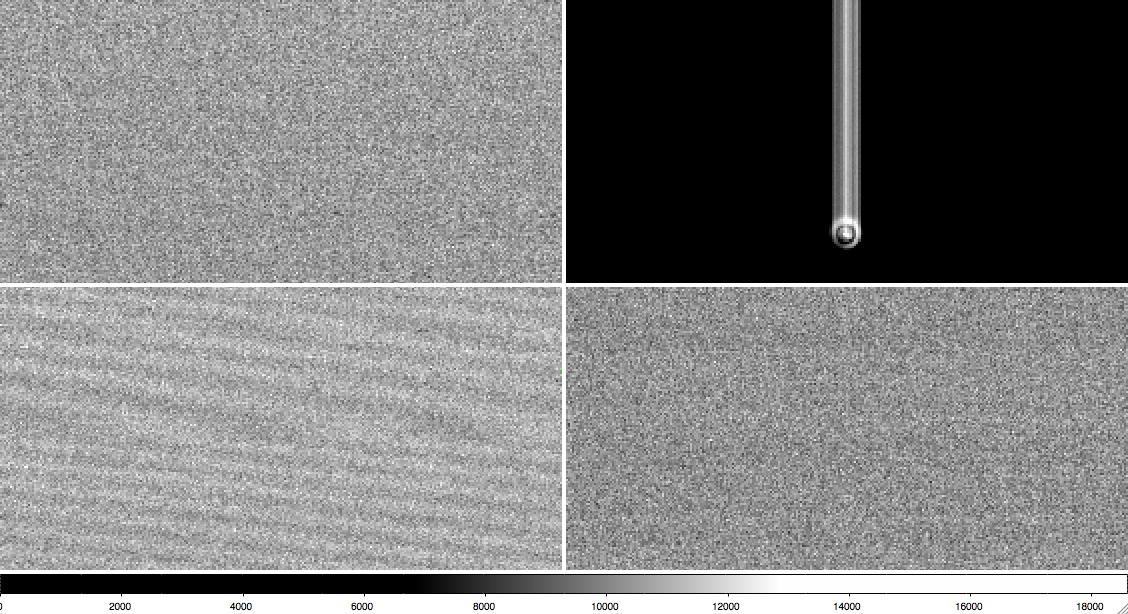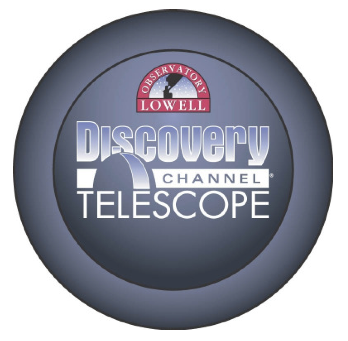Tom has released an updated version of the DeVeny slit viewing camera GUI. Changes are documented and appear in the new release of the DeVeny Users Manual (v1.5), available below. |
The USFS has begun closing parts of the National Forest in northern Arizona due to the very high fire danger. So far, DCT is NOT in the closure area, but the telescopes at Anderson Mesa are. Lowell will be working to get USFS permission to access the telescopes during this closure. USFS Coconino National Forest closure orders and information can be found on the Coconino National Forest Web Page. Please keep an eye on this situation. Safety is our number one concern, and the fire danger is very real. |
The DeVeny Spectrograph Reference and Operations Guide has been updated for the new release of the slitviewing camera GUI application. Version v1.5 (10 July 2018) of the manual is now available on the Observing at DCT confluence page. |
NOTICE: 2018Apr28 - We had some trouble with one of the machines that hosts the confluence data. If you notice problems with these pages, please let us know. Thank you. DCT 2018B Call for Proposals released (2018Apr10) The first version of the NIHTS User Manual has been posted to the Observing at DCT confluence page. Please have a look if you are thinking of using NIHTS. Any feedback would be welcome. |
The work on the DeVeny CCD camera noise has been completed, and the DeVeny is once again in operation. Many thanks to Tom Bida for the hard work on what has been a persistent intermittent problem. In Tom's words: "The baneful and puckish pattern noise of image readouts past has been largely squelched, through isolation of all ground and shield lines that pass through the hermetic connector." The improvement may be seen in the attached 4 panel image that Tom provided, along with his caption. - Lower left: beat pattern of pickup noise before modifications, sigma=3.07 DN (4.65 e- noise). The peak-to-peak amplitude of this pattern example is about 4.5 DN.
- Upper left: bias frame in lab following mods, sigma=2.75 DN (4.15 e-)
- Upper right: unshuttered out of focus pinhole image in lab (the greyscale bar comes from this image)
- Lower right: bias frame on DCT post-mods, sigma=2.73 DN (4.12 e-)

Gain and readout noise were measured in the lab with the current controlled source, at 1.5 e-/DN and 4.0 e-. According to the detector data sheet, this noise level is close to what is expected at our CCD clocking rate. A very low level partial noise pattern has been observed in a few bias frames on the DCT, so we will keep an eye out for those. Bias images taken on the DCT also appear a little more mottled and streaked (for lack of better words) than in the lab, but this doesn't affect the stddev's. Also, noise was seen to increase about 0.1-0.2 counts in biases taken while DeVeny motors were in motion. Hopefully the overall noise performance won't change during on-sky operations. |
The LMI User Manual has been updated. The new version is dated 2017 October 27. From Phil: "There have been some minor updates to the LMI manual: (a) revision of starting focus value, (b) addition of filter curves for the WR filters (thanks, Amanda, for the reminder!), and (c) reorganized where some of the data files (filter curves, etc) are kept on the web and changed the links. |
2017 Sept 21: Because of the differences in the re-installation of the secondary mirror, there are two key items that impact observing: - The nominal focus offsets for each instrument have changed, some of them significantly. Please, please, check with your TOs for current nominal focus offsets before setting them yourself, at least until you are comfortable with the current range of settings.
- The actual performance of the optics has changed. The predictive model that keeps the optics tuned is in the process of being re-built, but will take some time. In general,
- If you have had the optics tuned up recently, near where you are observing, things should be ok.
- If you have not tuned recently, or have slewed a significant distance, or the temperature has changed drastically (by more than 5 degrees C or so), then you should ask the TO to re-tune.
- If you think your focus needs to be checked, then you should consider asking the TO to re-tune the optics.
- In particular, we are recommending that on split nights, the optics be tuned at minimum at the night start, and at turn over in the middle of the night.
2017 Oct 10: Change to all focus offsets: - In addition to the changes, as of 10 October 2017, we are moving the primary down, which will change the M2 focus offsets by a roughly constant value. This is necessary because of the limitations in M2 piston in extension. Without the shift to M1, we will not be able to focus DeVeny and NIHTS as it gets colder. The M1 offset will reduce the M2 offsets by roughly 1000microns. Again, check with your TOs for the latest values.
|
As part of an effort to address safe access to the DCT, we have added an alarm keypad by the backdoor of the telescope building. This means that you can enter through either the normal front door, or if the steps are icy, you can enter through the backdoor. We are also in the process of installing an overhead shield above the backdoor to protect against snow and ice falling off of the dome. The same alarm code that works for the front door will work for the back one. |
For LMI, DeVeny, and NIHTS, the primary User Interface machine has shifted to dct-obs1.lowell.edu. This is instead of baggins.lowell.edu. The user name and password for dct-obs1 are different from those on baggins. See your TO when you are on-site for this information. If you will be observing remotely, please contact either your TO or Stephen Levine (sel .at. lowell) to get the updated credentials. Observing should otherwise look pretty much the same as before. If you notice a problem, please let us know. |
The LMI VR filter has been moved from the upper filter wheel to the lower wheel. In late August 2017, I took a quick look at the VR filter dome flats in the upper and lower wheels. The letter-boxing effect is less pronounced when it is mounted in the lower wheel (images and normalized row plots attached - the plots have been shifted to separate them on the plot). In the row plots, the upper wheel shows about 2.5 to 3% peak to valley variation, and the lower show about 1 to 1.5% on the rows through chip center. They are worse towards the corners. I have moved it to the lower wheel. VR should be added to the list of filters used in the lower wheel only. The VR filter was used mostly in the upper wheel prior to Summer 2017, though it was not mounted there exclusively. |
DCTUsers Slack Channel for Discussion & Announcements Proposing to Observe Applying for Observing Time - 2018B DCT Call for Proposals DCT Staff
Observing Run Preparation What to do before showing up for your run First time using DCT, or a particular instrument?
Calendars: - DCT monthly observing and TO calendar
- DCT science schedule
- Merged Sun/Moon/rise/set: 2015, 2016, 2017
- Lunar Phase: 2016, 2017, 2018
- Moon rise/set: 2016, 2017, 2018
- Sun rise/set: 2016, 2017, 2018
- Astronomical Twilight: 2016, 2017, 2018
DCT Remote Observing Notes
Target List Submission Ephemeris Data Submission/Generation Automated Function and Pattern Data Submission Object Data and Finder Chart Generators
During Your Run Closure Conditions DCT Staff Target of Opportunity (ToO) Procedures After Your Run Evaluation/Feedback forms Data Retrieval DCT Acknowledgment Text
|
 This page gives a general overview for visitors and staff
This page gives a general overview for visitors and staff  This page gives a general overview for visitors and staff
This page gives a general overview for visitors and staff